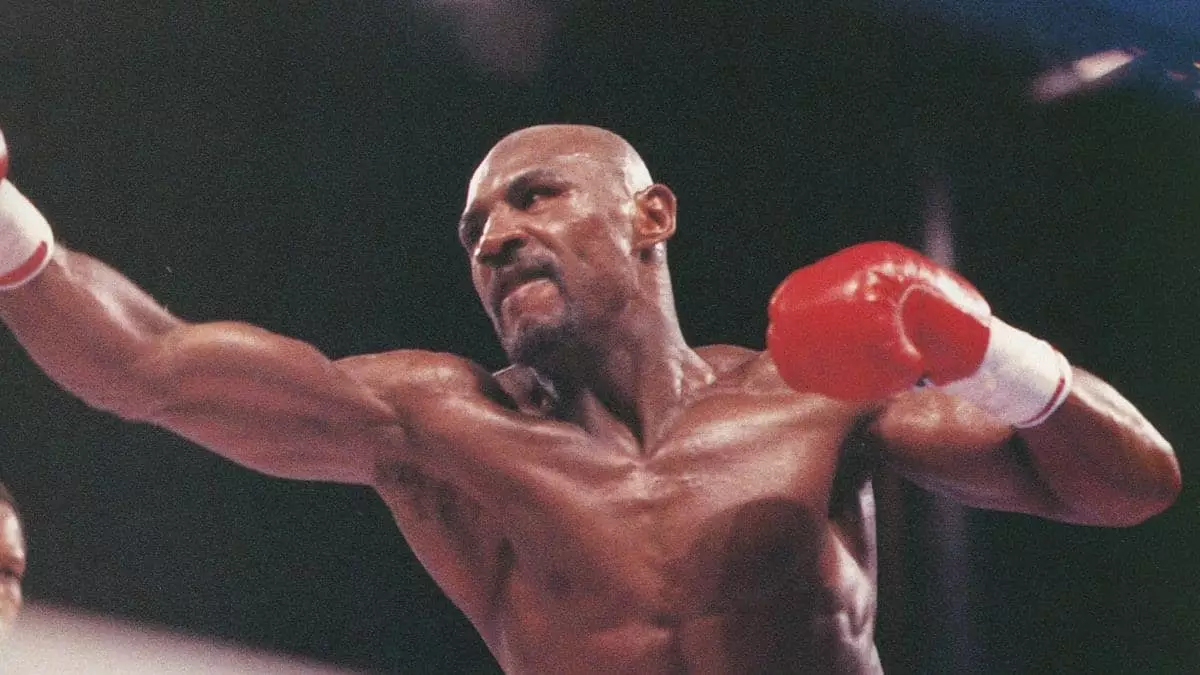In the annals of boxing history, few nights resonate as profoundly as April 6, 1987. It was on this unforgettable evening that two titans of the ring, Sugar Ray Leonard and Marvin Hagler, faced off in what has come to be known as the “Super Fight.” Held at the illustrious Caesars Palace in Las Vegas, the bout was surrounded by anticipation, not merely because of the athletic prowess of the participants, but due to the myriad of narratives that preceded it. Fans, journalists, and historians alike still debate the fight’s outcome, cementing its status as one of the most contentious and captivating contests in the world of sports.
The Backstory: Comebacks and Controversies
The fight’s backstory is steeped in drama and intrigue. Leonard, a former welterweight champion, was making a comeback after a troubled period marked by a severe retinal injury that had compelled him to retire in 1982. A mere shadow of his former self, he had only fought once since then, against a less-than-stellar opponent, Kevin Howard. Leonard’s state of mind was fraught; he declared the end of his career after suffering a knockdown in that fight, proclaiming, “It’s just not there.” So why did he suddenly feel equipped to challenge one of boxing’s elite?
Marvin Hagler, the reigning champion, appeared the opposite of fragile. He had been through the trenches, most notably in a grueling bout against John “The Beast” Mugabi. The wear and tear on Hagler, however, created an opening for Leonard to believe that this fight was winnable. With a perceived decay in Hagler’s once-imposing prowess, Leonard seized the moment, ready to dive back into the fray with no warm-up bout to gauge his abilities. Their contrasting statuses vividly painted a picturesque backdrop for the unfolding drama in the ring.
A Tactical Masterclass
Unfolding over 12 tense rounds—shortened at Leonard’s behest—the match was nothing short of a tactical masterpiece. Leonard showcased an exceptionally sophisticated fighting style, demonstrating a blend of speed, footwork, and ring intelligence that left spectators gasping. While Hagler often fought with brute strength and aggression, during crucial early rounds, he fought orthodox, deviating from the southpaw stance that had brought him success. This miscalculation proved detrimental, giving Leonard an edge that ultimately dazzled the judges.
Critics argue the fight through the lens of scoring disparities. How could one judge submit a 118-110 card in favor of Leonard? It seemed unfathomable to many, igniting a rage of disputes that would echo decades later. For those on Leonard’s side, the perception was that he “stole” the fight through cunning and the flawless application of his skills, while Hagler’s supporters maintained that he was robbed. The fight encapsulated the age-old adage in boxing: to win, one must do more than outbox; they must outsmart as well.
The Impact of a Super Fight
In the wake of Leonard’s victory, the aftermath was marked by fervent discussions and continued division among fans. Calls for a rematch lingered, but the complexities surrounding both fighters—particularly Leonard’s retirement tendencies—kept that dream at bay. The significance of this bout transcends mere statistics and accolades; it is a fascinating study of contrasting styles and personalities that have left an indelible mark on boxing.
To label Leonard vs. Hagler simply as a “fight” underestimates the emotional and cultural weight it carried. It reflected not only the technical application of boxing strategies but also the personal journey of two athletes grappling with their legacies. For some, this clash encapsulates the very essence of the sport, where heated discussions and passionate opinions are both commonplace and cherished.
As we revisit this cornerstone of boxing lore, we recognize that it serves as a touchstone for generations of fans. In the end, it is the sheer excitement of the bout, combined with the layered narratives of adversity, strategy, and honor, that continue to inspire lively discussions throughout the community of boxing aficionados. Whether you root for Leonard or Hagler, one truth remains: this super fight is etched into the fabric of sports history, an enduring reminder of why we love the sport so deeply.

